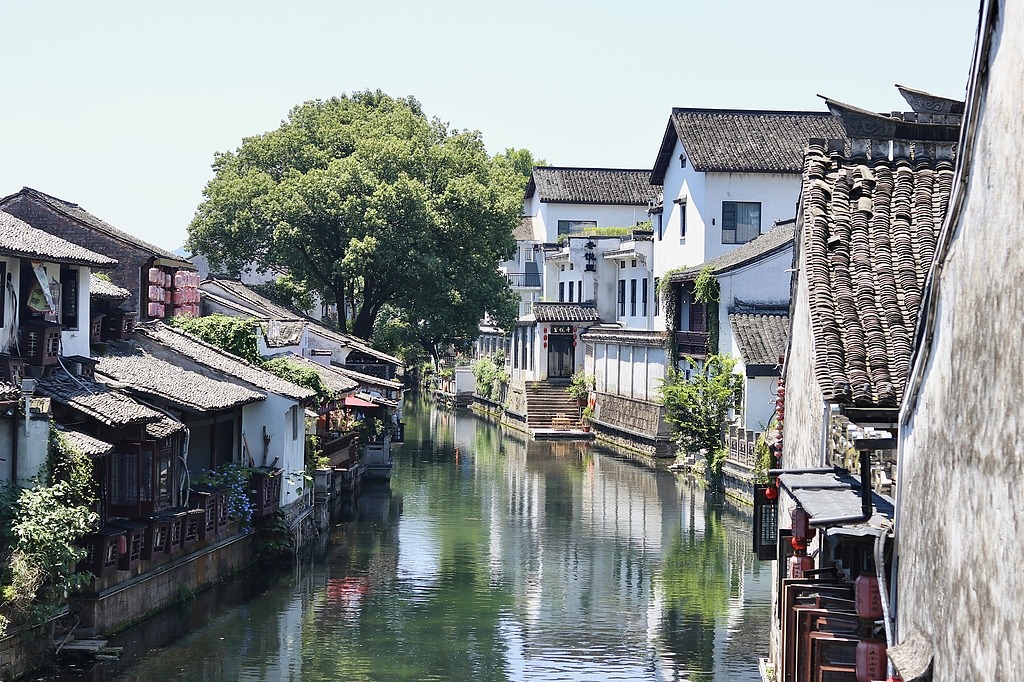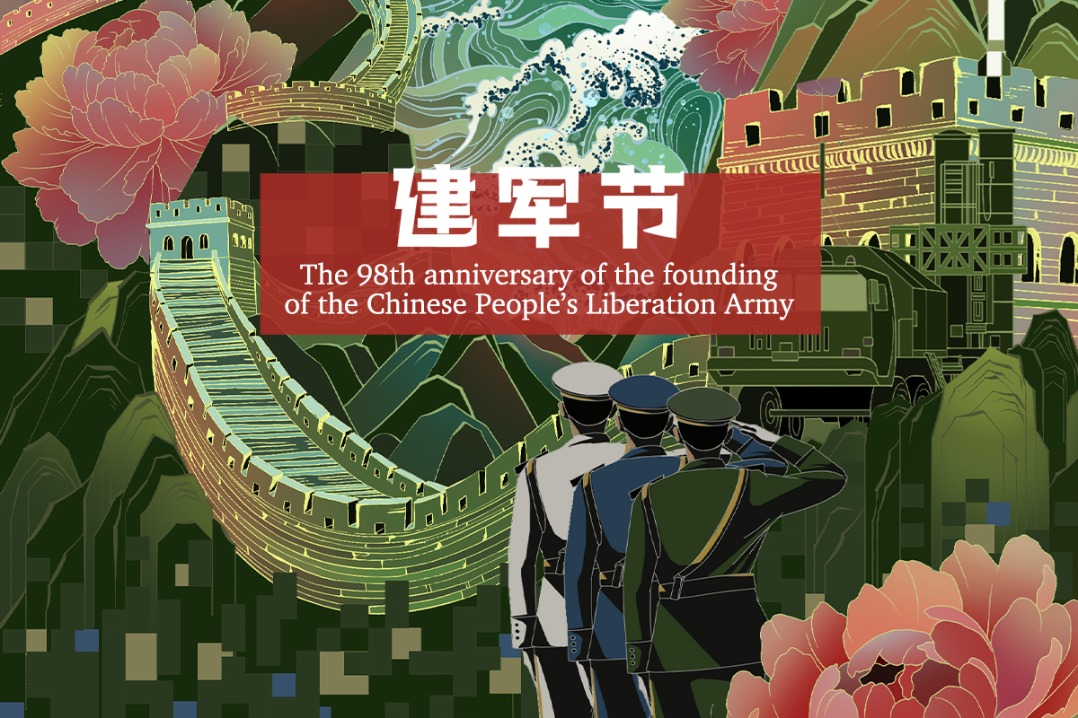Love of lacquer draws artist to Chongqing
Frenchman takes advantage of abundant raw material in Southwest China to make a living crafting modern works

Vincent Cazeneuve's art studio is hidden in a two-story farmer's house on Hufeng Mountain, about 40 kilometers away from downtown Chongqing.
On a quiet, rainy afternoon in late autumn, the French artist was using a scraper to put layers of dark lacquer mixture on a large piece of ragged cloth on a large, wooden table in the studio.
"I just add many processes to my art and improvise to it," he said. "I don't know what's next."
Wearing a pair of olive green rubber-soled shoes, a favorite among Chinese farmers, the 43-year-old Frenchman has lived like a local in the southwestern municipality since 2009 and has developed his lacquer art career.
He is married to a Sichuan woman and has a newborn son.
The artist applied lacquer on a wide range of chosen materials, such as ramie fabric, gold leaves, Moso bamboo and used rice bags, exploring the endless possibilities of their combination with his ultra-simplistic aesthetic style.
"Unlike other objects, raw lacquer has life, and it is warm and dangerous (because it can cause skin irritation)," he said.
So infatuated with lacquer, he named himself Qi Wensen after this natural material in Chinese, combining "Wensen", a transliteration of his first name, with qi, the Chinese word for lacquer.
Born in Toulouse, France, Cazeneuve studied at Ecole des Metiers d'Art in Revel before opening his first studio specializing in the restoration of Western and Asian lacquer wares.
The history of Chinese using lacquer in daily life dates back to some 7,000 years ago in the Neolithic period. During the Shang Dynasty (1600-1046 BC), Chinese people developed highly sophisticated lacquer art. The Frenchman learned that Southwest China produces one of the best raw lacquers in the world. The longing to be a real artist pushed him to close his business in 2007 and travel to China at the invitation of a Chinese friend.
"It was my first time coming to China, and I loved the country immediately," he said.
In 2009, he settled down in Chongqing, which boasts ample lacquer trees and the prestigious Sichuan Fine Arts Institute.
Due to limited raw lacquer produce, "at first, the farmers wouldn't sell raw lacquer to a foreigner. They want to keep it for their coffins", Cazeneuve said.
In Chinese rural areas, seniors traditionally prepare their coffins while they are alive, and Chinese lacquer is used to paint the coffins.
After demonstrating his sincerity and gaining the trust of the locals, he befriended a lacquer farmer named Yang Tianlun in the deep Daba Mountains of Chengkou county in northeastern Chongqing. From time to time, he would travel to the remote county to buy raw lacquer from Yang and hang out with Yang's family.
In addition to creating art, Cazeneuve runs a lacquer art workshop for students from the Sichuan Fine Arts Institute.
One of his students, Pu Keyu, was inspired by the French artist and completed a successful graduation project combining natural silk and Chinese lacquer.
"He refreshed my understanding about materials," she said. "He is a man of practice, adhering to traditional techniques, and he is serious about every step of the creative process."
Cazeneuve's art has received critical acclaim both at home and abroad.
After The Enduring Practices of Lacquer exhibition-which included Cazeneuve's work-was staged in Shanghai (2018) and Paris (2019), Galerie Dumonteil Shanghai, the Asian branch of a French art gallery, showcased his solo exhibition Wandering in July. Wandering comprised 15 of his works, all of which were created in the past year.
"My work is all about the transformation and cycle of materials," he wrote in a creative note. "I paint with materials, rather than paints."
His works have also been acquired by private collectors in France, Italy, the United States, Switzerland and China.
Zheng Yuxin, director of Galerie Dumonteil Shanghai, recalled her first encounter with Cazeneuve's work at his solo exhibition in 2013 at a historical villa in Shanghai decorated with antique Chinese furniture.
"His work is very poetic and elegant. He used an unusual material, Chinese lacquer," which isn't normally applied to modern Chinese artwork, she said.
The gallery has hosted four exhibitions for him since 2014, three in Shanghai and one in Paris.
"His exhibitions have triggered a lot of thought and discussion among modern art collectors and lacquer art creators at home and abroad," she said.


Today's Top News
- Xi, Nepalese president exchange congratulations on 70th anniversary of ties
- Relief efforts intensified as rain death toll mounts
- Cultural insight helps chart path to urbanization
- People's war principle drives PLA development
- SCO summit poised for fruitful outcomes
- Steps to spur consumption, enhance vitality






























